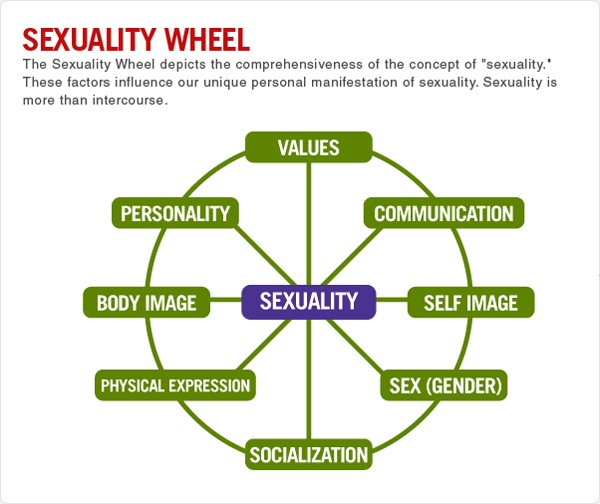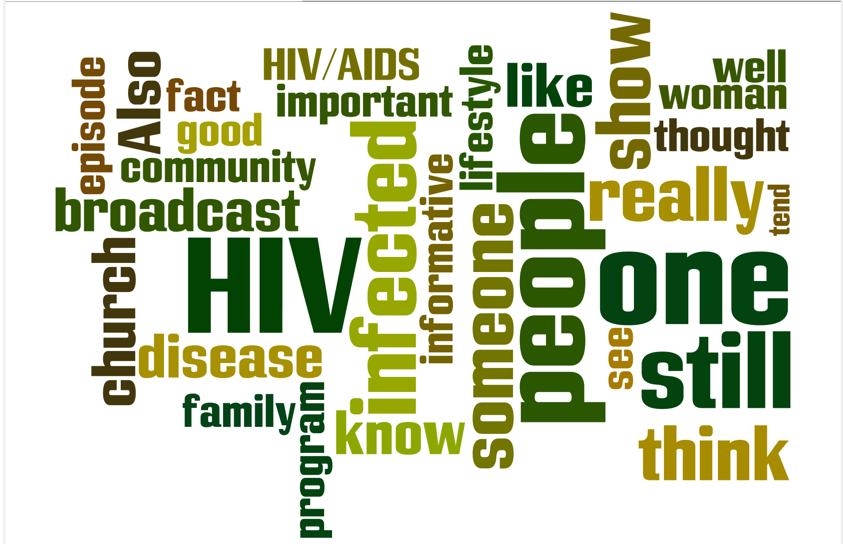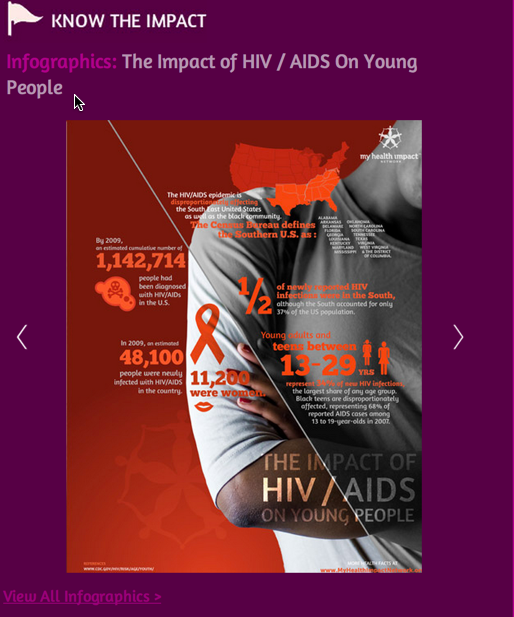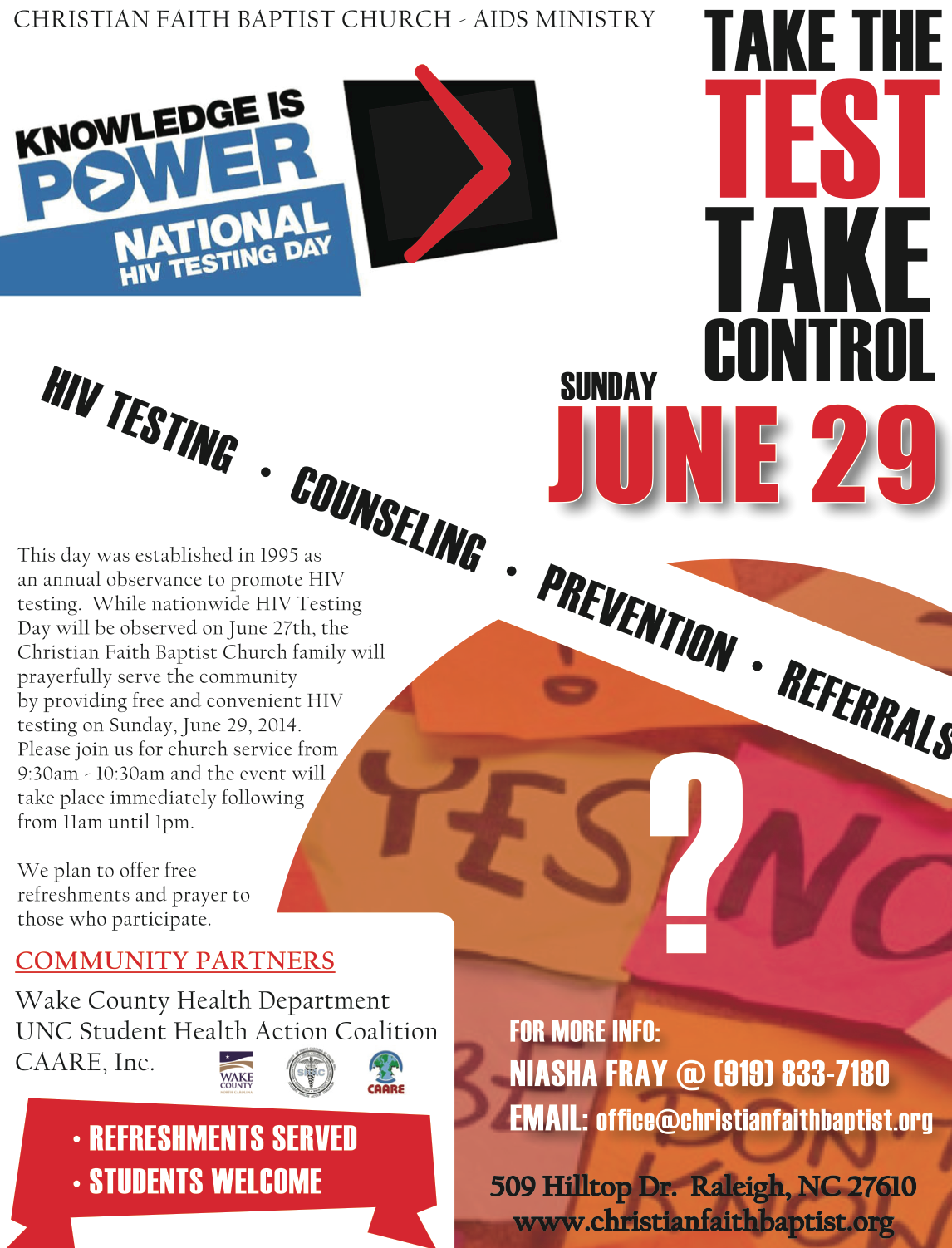myHIN Blog
Category: Men’s Health Articles

June 09, 2015
Growth
The key to maintaining a long relationship is keeping it healthy. Think of it as the same way you would treat a plant. You have to water it, nurture it, and give it some room to grow. Growth being the most important. Your significant other should complement your growth and you should do the same for them. This means encouraging one another to pursue those dreams and maintain high goals.
From my personal experience, it can be somewhat challenging if those dreams take your significant other to another side of the country. At the end of the day you have to put yourself in their shoes and realize that you would like the same support in that situation.
Relationships can be hard; that’s no secret. However, recognizing how the growth of the relationship affects the individuals is amazing. Growing as one and yet still two individuals is the best part of it all.
Psychology Today gives a couple healthy nuggets to maintaining a healthy relationship. I’ll leave you all with a couple that resonated with me:
- Give what you want to get.
- Successful relationships take work.
- Find a way to become and stay best friends.
Share

October 15, 2014
More Than Just Intercourse
For some people, the word sexuality only means intercourse between two individuals. To others, it may be a term that refers to just sexual orientation. Regardless to any interpretation of the word, sexuality is more than just intercourse. According to the World Health Organization, sexuality is a “central aspect of being human throughout life, which encompasses sex, gender identity and role, sexual orientation, eroticism, pleasure, intimacy and reproduction” (Source: WHO, 2010, p. 10).

Sexuality can be experienced in more than just one way. Not always is the attention geared towards the physical. Having strong mental and intellectual capabilities have to potential to stimulate and foster one’s interest. There is no particular “right way” to fully encompass and express all of the dimensions that play into sexuality. The Sexuality Wheel also suggests that sexuality is widespread, consisting of many components. These components include: personality, values, communication, self-image, gender, socialization, physical expression, and body image. Examining this from the @myHealthImpact perspective, we encourage individuals to look at themselves from a holistic mindset. If these components of sexuality are not properly managed, it could lead to physical and mental issues. We help spread awareness so that our community has the intellectual capacity to go and inform others. Look outside of the box and you will see sexuality is definitely more than just intercourse.
Follow us at @myHealthImpact as we continue to discuss important topics relating to sexual, physical and emotional health.
Share

July 30, 2014
Women’s Role in Men Health
Not to generalize all men but I know that the guys around my house used to absolutely despise going to the doctor because they felt like it was a waste of time. They believed that ALL could be healed with anything in the medicine cabinet and band-aids. This was my Dad before he suffered from a heart attack. These days I feel like our family dynamic is a little different. My Dad definitely doesn’t mind going to the doctor now and instead suggests healthy options at the dinner table.
 My Mother and I are the only two females in my household and although my Dad has taken a different role in the health of our family, at the end of the day, the women keep things realistic and rational. There are many food options that my Dad brings to the table, but we (the women) figure out how to make these things work for our family or how to politely tell him “No, we’ll pass on that one”. From incorporating more fish, chicken and turkey into our diets and working out pork and beef to even starting our own family garden, our family has been made a complete lifestyle change. What’s an idea without someone to put it into action? Right, just an idea.
My Mother and I are the only two females in my household and although my Dad has taken a different role in the health of our family, at the end of the day, the women keep things realistic and rational. There are many food options that my Dad brings to the table, but we (the women) figure out how to make these things work for our family or how to politely tell him “No, we’ll pass on that one”. From incorporating more fish, chicken and turkey into our diets and working out pork and beef to even starting our own family garden, our family has been made a complete lifestyle change. What’s an idea without someone to put it into action? Right, just an idea.
I believe that women play a huge role in men’s health. Typically because women are more aware of the signs of pending health issues thus sending up a red flag and ensuring that the men (in our families) see a doctor. So let's just face it, we are the backbone!

Share

July 22, 2014
Black America’s Silent Epidemic – Outtake of @OWNTV @Lisaling – Our America
We watched the June 26, 2014 Our America series on OWN. In this series, journalist Lisa Ling covered the HIV epidemic in Black America. Our team watched intently and followed the Twitter hashtag during the show. What would be different about this coverage? How would the Black community be portrayed? Would this be, yet, another depiction of all things wrong in and with the community? How would it reach young people, the millennials?
Here are comments below from the research scholars (millennials) on the MyHealthImpact team and their thoughts on the series. Comments have been shorten for this blog post.

Follow us @myhealthimpact on Twitter. See myhealthimpactnetwork.org for additional content and health information.
Share

March 06, 2014
The TURN UP: Spring Break Safety
With Spring Break literally around the corner, college students everywhere, and I mean EVERYWHERE are gearing up to travel to distance and tropical places to soak up some sun and jump in the water. While most students are only concentrating on getting that last minute workout in for washboards abs or purchasing their last minute wardrobe findings, I guarantee no one is thinking about STDs!
Instead, most college students are thinking about fun, alcohol and parties. Don’t get me wrong, nothing is wrong with having fun and of course making lifetime memories, BUT be SMART about it! Don’t forget about your morals and values, or should I say “home training”. Have “responsible” fun. Yes, spring break is about having a good time and getting away from the books, but don’t be naive.
Drink Responsibly
 Personally, do yourself a favor and party smart. Pace yourself if you choose to drink, and avoid hard alcohol if you can or other drinks that are powerful and have fast effects—cause drunks make for “easy targets”.
Personally, do yourself a favor and party smart. Pace yourself if you choose to drink, and avoid hard alcohol if you can or other drinks that are powerful and have fast effects—cause drunks make for “easy targets”.
According to a study by the University of Wisconsin, 75 percent of college males and 43 percent of females reported being intoxicated on a daily basis during spring break. Which brings me to another point of discussion; don’t let alcohol blur the lines of love! There is no such thing as “I want to get to know you” or “love at first sight” during spring break! Just lust, deceitful lies, and sexual transmitted diseases! So, be smart and not STUPID!
Stay Safe: Safe Sex, Know Your Facts and Know Your Status
The only 100% sure way to prevent sexually transmitted diseases is by not having sex. If you choose to have sex with a stranger—which isn’t best idea—use something called “condoms”. We are college students, so this should not be hard. Stock up on protection before you leave home so you never find yourself in a compromised situation. If this isn’t enough for you, here are the facts: Women are more likely to be victims of sexual violence than men. Women who experience both sexual and physical abuse are significantly more likely to have sexually transmitted diseases. Take precautions and avoid situations or persons that may place you at risk for harm. Decide before even going on spring break what you’re willing to do, and then get to work setting your boundaries early and often. If you meet someone and decide to shack up, be up front with him or her if sex isn’t in the plan. Maybe something like, “Hey good lookin’. I’ve had fun this evening, but no sex tonight.” But seriously, don’t ever let anyone talk you into doing something you’re uncomfortable with.
Keep Safe and Hang With Your Friends
Lastly, “if you go out with your friends, go home with your friends.” It’s one of those things that keeps you a whole lot safer, and eliminates the bad, ugly, and stupid drama. This way you can look out for one another, and get a friend home who is too intoxicated to be out. So this spring break, think a little bit before you act! I’m sure that one week of fun is not worth your life! Don’t turn up too much, so that you look like a fool!
Share

March 06, 2014
Are Sexual Transmitted Diseases (STD’s) still a taboo subject?
Sexually Transmitted Diseases, STDs, have become a topic of discussion that many people feel uncomfortable talking about and try not to think about them, hoping they will go away. As of now there are more than 25 diseases that are transmitted sexually. The organisms, which can cause these diseases usually, enter the body through mucous membranes—such as the surfaces of the vagina, urethra, anus, and mouth.
Listing of Common STDs
How are Sexual Transmitted Diseases (STDs) Caught?
Sexually transmitted diseases can be caught through intimate contact with someone who is infected, especially during oral, anal, or vaginal sex. However, some infections are also transmitted nonsexually. Sexually active college-age men and women are at the highest risk for contracting STDs. With that said, it is important for college students to use protection and get tested regularly.
Symptoms of STDs can be unnoticeable and can lead to more issues if not treated. As adults, it is our responsibility to stay educated on the topic of STDs and continue to utilize health institutions for help and guidance.
If that isn’t enough motivation for you, below are some examples of STDs and images of their effects. I hope this information gives you the courage to help spread the awareness of this issue and practice safe sex, as well as, getting tested.
Pictures of Common STDs




Share

February 27, 2014
Condoms Don’t Protect From Everything
Some people think they know everything there is to know about sexually transmitted diseases. The possibility of catching gonorrhea, syphilis, or even HIV is a scary thought- but some have that perception that they won’t catch anything. Maybe you wear condoms during sexual intercourse so you think that you’re good and have nothing to worry about, right? Well, I must inform you that condoms don’t protect from everything. Even some of the most elite individuals in society are walking around with sexually transmitted diseases. Yes- this is not a joke.
Did You Know Condoms Have a Fail Rate?
Statistics show that condoms have an annual 11% fail rate. Not so safe as you imagined after all… Even when condoms are used, they do not fully protect from sexually transmitted diseases that are passed by skin-to-skin contact. Just this statement alone opens the door for many diseases to walk in and take residence in your body if you are not careful.
Here are some tips you can use in order to lower your risk of catching an STD:
1. Get Tested. Use STD Testing to Know Your Status!
This may sound like an obvious answer but there are still so many people who do not know their std status. I will admit that you fear what you do not know. Having a close friend to go get tested with you can help eliminate that fear you have. That “what if” question will continue to linger until you make the decision to know you status for yourself. We have a specific area on the myHealthImpact website where you can type in your zip code and you will be informed of testing locations that are close to you.
2: Know the Safe Sex Facts For Yourself
There are so many resources available that will provide information on safe sex and sexually transmitted diseases. Saying that you were not informed anymore can no longer be an excuse. Sometimes you have to take the initiative to seek out information for yourself. Ultimately, how can you inform someone about STDs if you don’t know about them yourself?
3. Abstinence.
This is something that the younger generation doesn’t hear a lot about anymore. The media is constantly portraying sex in advertisements, song lyrics and online which makes it seem acceptable. Remaining abstinent until marriage is the only way you will be able to know your status for sure. You don’t run the risk of catching a sexually transmitted disease or early parenthood. This may seem challenging but it is possible. Make a promise to yourself that you will honor and protect your body. Anytime you find yourself being tempted, remember that promise you made to yourself. It will be worth the wait for that special someone.

These diseases are REAL people. While all sexually transmitted diseases don’t lead to death, some of them do. Whether you continue to have sex before marriage or wait until marriage is totally up to you. Whatever you decide, I encourage you to be safe. While condoms do protect from some STDs, they don’t protect from everything. Just keep that in mind.
Share

February 16, 2014
Smart Condoms: Could These Be The Best Condoms Created to Date?
As we all know condoms do not prevent all sexual transmitted diseases (STDs) and sexual transmitted infections (STIs) during sex. Well why not build a better condom. Last November the Bill and Melinda Gates foundation received over 812 entries for the “Build-a-better-condom” competition. A reported 11 entries received a grant of $100,000 to produce their condoms and hopefully bridge the gap for condom innovation. This is where tech meets health.
Talk about a smart condoms. Some of these entries range from polymer based composite materials to biologically engineering material for a “significant enhancement for male pleasure.” These “next-gen” condoms may be what consumers are looking for when taking safe sex more seriously.
Developer Lakshminarayanan Ragupathy from Trivandrum, India, has an entry named “The warm embrace”, which incorporates composites for high heat transfer, but also drugs that would enhance safety. Not only is his design super thin and strong, it’s also very flexible.
Now here’s a question, how much would you pay for a condom that you couldn’t feel and worked 99.99% of the time?
Follow us at tumblr.myhealthimpactnetwork.org (Tumblr)
Follow us on twitter: @myhealthimpact
Share

January 16, 2014
5 Ways to Create a Healthy Lifestyle
With the New Year, I wanted to create a healthy lifestyle I could maintain throughout the year. It is important to set yourself up for success with a clear mind and body. With that said, I developed 5 easy ways to create a healthy lifestyle.
1. Exercise Daily
If you want to live well and live longer, you must exercise! Try to exercise at least 30 minutes a day. Whether it’s going to a gym class on campus or going on a jog at your local park, there are plenty of ways to incorporate exercise in our daily routines. Try walking to class instead of taking the bus, or joining an intramural sport team. Studies show that just 10 minutes of exercise makes a difference—so do something!
2. Be a picky eater!
Set yourself up for success! Think about planning a healthy diet as a number of small, manageable steps rather than one big drastic change.
Focus on finding foods you love and easy recipes that incorporate a few fresh ingredients.
Eat in moderation. Moderation means eating less than we do now. It doesn’t mean you eliminate the things that you love. Just try to eat more healthy things than unhealthy ones. Also think smaller portions. For example, when dining out, choose a starter instead of an entree, split a dish with a friend, and don’t supersize anything. When at home, use smaller plates, think about serving sizes and start small.
Eat breakfast! Eating fruits and whole grains in the morning can help jumpstart your metabolism and energy for the day.
Avoid eating at night! Try to set a time where don’t eat after. Eating late at during a time when you are less active, can cause weight gain and create unhealthy habits. Studies show that after-dinner snacks tend to be high in fat and calories. So avoid them!
3. Get a good night’s sleep
Keep a regular sleep schedule. Set a regular bedtime and wake up at the same time every day. Nap to make up for lost sleep, but make sure to be smart about napping. While napping can help you recharge, it can also create bad habits when it comes to your sleep cycles. Lastly, create a relaxing sleep environment. Make your room more sleep friendly. Keep the noise down, keep your room cool, and make sure that your bed is comfortable!
4. Keep Healthy Relationships
The healthiest people are those who have relationships with other healthy people. Healthy relationships reduce stress, unhealthy habits, and help motivate you to succeed and do better. Surround yourself with people who are going to uplift you and make you feel better about yourself. Having a strong foundation is essential to life.
5. Give yourself a break!
Find fun activities for you to do to relieve stress! Go to the movies or go shopping. Create new hobbies. Hang out with your friends. Do anything that makes you feel happy. It’s important for you to take a break from life’s stresses and create awesome memories.
Follow us at tumblr.myhealthimpactnetwork.org (Tumblr)
Follow us on twitter @myhealthimpact
Share
In Partnership with: Poole College of Management, College of Humanities and Social Sciences, National Science Foundation, Penn State
Take Action, Get Tested: Find Your Local Testing Center Why Get Tested?




